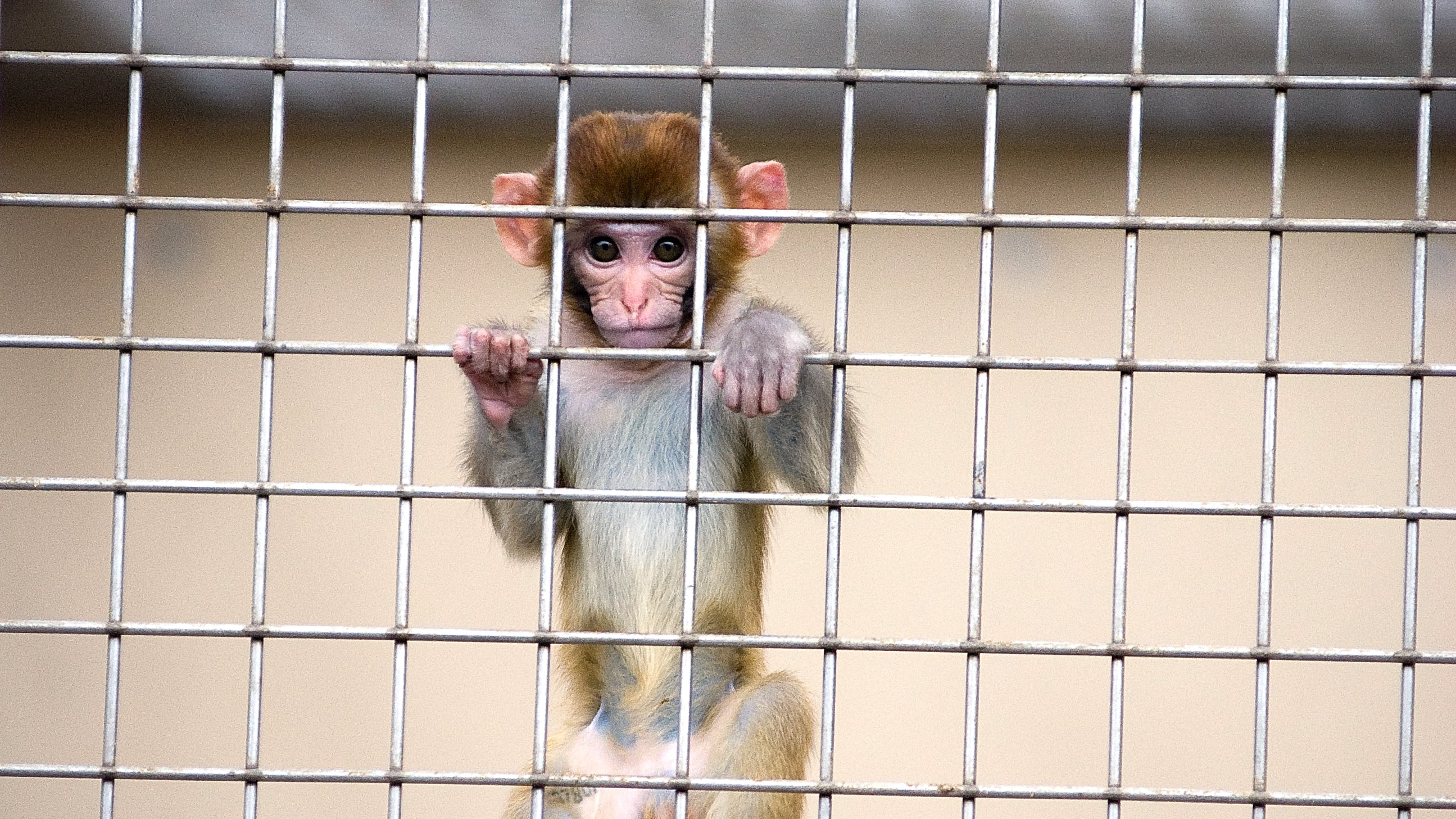The National Institutes of Health said this week it planned to curb the use of animals in medical testing, a move that could hurt Oregon Health & Science University, which collects about $56 million a year from the NIH to run the Oregon National Primate Research Center, a 200-acre facility in Hillsboro.
Dr. Jay Bhattacharya, who took over as head of the NIH on April 1, said the agency would rely on organoids—three-dimensional tissue cultures that mimic the function of organs—and other technologies to test drugs, eschewing animal studies.
“For decades, our biomedical research system has relied heavily on animal models,” Bhattacharya said in a press release. “By integrating advances in data science and technology with our growing understanding of human biology, we can fundamentally reimagine the way research is conducted.”
The NIH is one of 13 operating divisions in the U.S. Department of Health and Human Services, now run by Robert F. Kennedy Jr. The NIH’s move away from animal testing comes two weeks after the Food & Drug Administration said it would stop testing monoclonal antibodies and other drugs on animals.
(The announcement compounded other bad news OHSU got Friday. In a draft budget released this morning, the Trump administration proposed to cut overall funding to the NIH almost in half from $48 billion to $27 billion. Those cuts are likely to sting on Marquam Hill, too. OHSU gets about $300 million in NIH grants each year, accounting for around 6% of its $5 billion in annual operating revenue.)
The Physicians Committee for Responsible Medicine, a medical research and ethics group that has been running television and radio ads calling for the closure of the primate center, lauded the NIH’s move away from animal testing.
“NIH director Jay Bhattacharya’s historic announcement that the NIH will prioritize human-based science is not only a big win for animals, but also for human health,” Catharine Krebs, medical research program manager at PCRM, said in a statement. “We’ve known for a long time that animal experiments don’t reliably translate to human health outcomes, coming at a grave cost to patients in need of better treatments, to innovation, and to animal lives.”
People for the Ethical Treatment of Animals also lauded the decision.
“Champagne corks are popping at PETA following NIH director Dr. Jay Bhattacharya’s decision to start cutting off support for archaic animal experiments—a move that strips the protective umbrella from institutions like OHSU,“ PETA senior science adviser Dr. Lisa Jones-Engel said in a statement to WW. “OHSU’s Oregon National Primate Research Center is a national disgrace, where monkeys are imprisoned, mutilated, and killed in pointless experiments that have failed for decades to deliver cures.”
OHSU’s press department didn’t return an email seeking comment on the matter.
Animal rights advocates who have long struggled to gain traction in their battle against the primate center have now found a powerful ally in the Trump White House. Like Kennedy, who says that cod liver oil can cure measles, NIH head Bhattacharya is a controversial figure in medicine. He was a lead author of the Great Barrington Declaration, a 2020 report that recommended letting COVID-19 spread among young people who likely wouldn’t be killed and could therefore develop immunity.
That same year, Bhattacharya co-authored an op-ed in The Wall Street Journal, saying the pandemic would kill 40,000 Americans. It has killed more than a million.
Separately, the U.S. Department of Agriculture, which regulates the primate centers, sent an “official warning notice of alleged violation” on April 17, saying that OHSU had violated federal animal welfare laws on two occasions.
In the first incident, on June 24, staff anesthetizing a “young adult ferret” ruptured its airway and collapsed one of its lungs, killing the animal, the USDA report says. On Oct. 1, a technician noticed a 4-year-old Japanese macaque lying down several times, behavior that can indicate illness. The technician didn’t alert a veterinarian, USDA says, and the animal was found dead the next day.
PETA discovered the warning and publicized it today.
“Federal funding for animal research is imploding, and OHSU is in denial,” said state Rep. David Gomberg (D-Otis). “We need a plan that takes care of workers, refocuses science on more effective, non-animal methods, and deals humanely with 5,000 surplus monkeys.”
Gomberg, a longtime critic of the primate center, sponsored a bill in 2023 that would have required OHSU to publish annual reports on the number of primates at the facility and how many were born, bought, sold or used for research.
Dr. Greg Westergaard, who runs Alpha Genesis, a primate breeding center in South Carolina that provides primates to pharmaceutical companies for safety testing, says the NIH’s move away from animals will force “insurmountable cuts” at the nation’s seven national primate research centers and their scientific programs.
Monkeys need round-the-clock care, Westergaard says, so OHSU and other operators of the primate centers must be prepared for cuts in funding.
OHSU’s options, Westergaard says, are challenging. OHSU could euthanize the monkeys or send them to a sanctuary, where OHSU would likely have to pay for lifetime care. OHSU could also send them to a facility like Alpha Genesis for breeding.
The first option is “morally inconceivable,” Westergaard said in an email. The second one is prohibitively expensive, at about $150,000 per primate. Option 3, sending the monkeys to a breeder like him, would obviate long-term costs of care, provide breeding stock for future research, and let the animals live outdoors in social groups for life.
Garet Lahvis, an author and former OHSU neuroscientist who discovered empathy and social reward in mice (and soon afterward stopped experimenting on them), says he doesn’t care for the Trump administration’s “sledgehammer approach” to the NIH.
“But given the self-inflicted blindness that’s endemic in animal research,” Lahvis said, “this needed to be done.”

